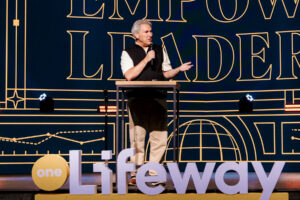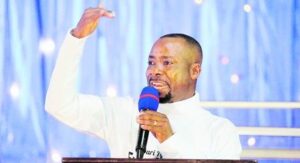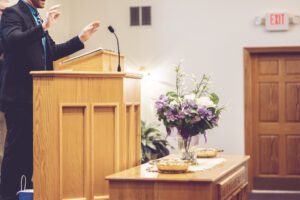
PARKVILLE, Mo. (BP)–Out of Southern Baptist’s 16,287,494 members, only 6,024,289, or 37 percent, on average, show up for their church’s primary meeting, according to statistics from LifeWay Christian Resources.
If your church is normal, and not brand new, your statistics are probably similar. In other words, if you have 200 in attendance on Sunday morning, you likely have 500-600 or even more on your roll.
It gets worse when counting non-Sunday morning meetings. In 1996, the last time the SBC kept these statistics, the number of Sunday evening attendees was equal to only 12.3 percent of the membership (in churches that had evening meetings).
The number of those attending includes many non-member children and guests, often making up a third of the attendance.
In one church, with 7,000 on the roll, there are only 2000 in attendance on Sunday mornings, and 600–700 on Sunday evening. When you account for the guests and non-member children, you have about 1500 actual members coming in the morning and 500 or so in the evening. Where are the 5,500 members who are missing on Sunday mornings? Where are the 6,500 who are missing in the evening?
Another church has 2,100 on the roll, with 725 coming on Sunday morning. Remove guests and non-member children and the figure drops to 600 or less. Only about a third of that number come out on Sunday evening, representing less than 10 percent of the membership. Another church has 310 on the roll with only 100 who attend on Sunday morning. Only 30–35, or approximately 10 percent, come to the evening worship service.
Shut-ins and those who are sick, out of town, or in the military, certainly affect the figures a little. But those who are justifiably absent are not enough to alter the bleakness of the picture. Even if you generously grant that all 37 percent are true believers — an estimation that most pastors would say is way off the mark — one still has a church membership that is more dead than alive.
If we are honest, we have to ask ourselves, “Do Southern Baptists believe in a regenerate membership?”
No church, and no denomination, should call itself healthy unless more people attend than are on the roll. This is a standard kept by much of the world, and our great-grandparents as well. We would be closer to the revival we desire if we would admit our failure, humbly hang our heads, and seek to rectify this awful hindrance to God’s blessing.
In the Philadelphia Baptist Association Minutes of the 18th century, our first American statistical records show that five times as many people attended the association’s churches as were on their rolls. In his book “Democratic Religion,” Gregory A. Wills reports that three times the number that were on the rolls attended Baptist churches in 1791, then located mostly along the eastern seaboard. In 1835, the Christian Index of Georgia indicated that “not less than twice the number” of members were in attendance in their churches.
Today, in rough numbers, it takes close to 300 people on our rolls to have 100 attendees. In the 1790s, it took only 33. Or, to put it in larger figures, it now takes nearly 3000 people, supposedly won to Christ and baptized, to result in a church attendance of 1000. Back then, it took only 333. Our potency has diminished to such an extent that we must “win” and “baptize” nearly 2,000 more people to get the same 1000 to attend.
Most Southern Baptists, regardless of our progress in inerrancy, need raising from the dead.
–30–
Jim Elliff is president of Christian Communicators Worldwide, online at www.CCWonline.org.














